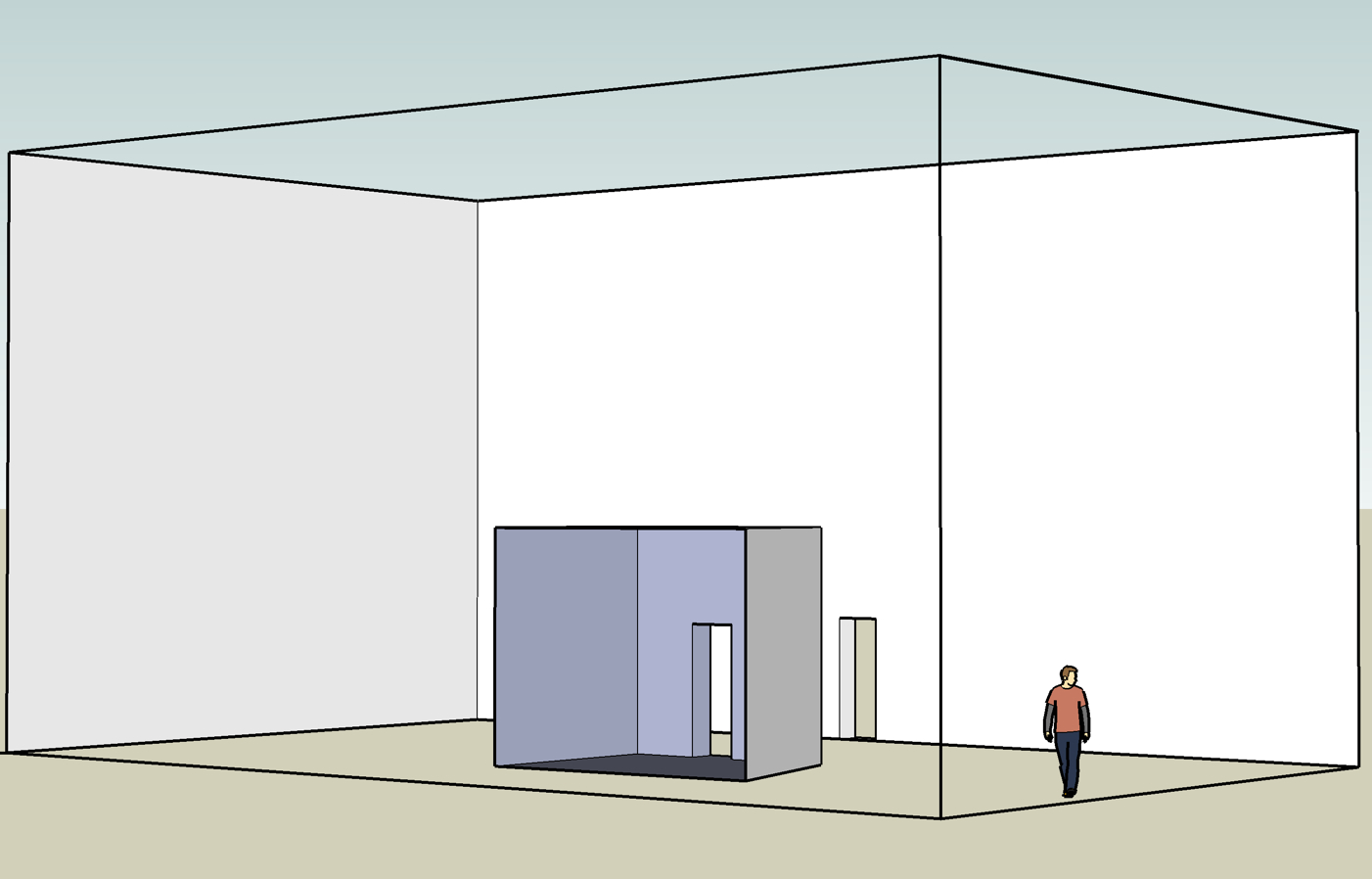
In a series of works, Neuhaus has presented spaces identical in their contours, light values, and moods by using different sound installations. For example, the Two Identical Rooms (1989) for Harald Szeemann's exhibition in the Deichtorhallen in Hamburg, the startling virtuosity of which consisted not only in the different experience of the spaces but also in the fact that the sound did not issue from the wide entrance. One of the most striking spatial displacements Neuhaus has achieved was in the Karsten Greve Gallery in Cologne. In a tiny kitchenette that opened off a larger room, he located barely perceptible acoustic signals that would, strictly speaking, have been characteristic of vastly spacious halls and vaults. The eye saw a cramped cabinet space but the ear registered the large sounds and echoes we hear in a big space. The eye enjoyed a clear gain. But not for long. When you moved into the exhibition room, with its normal sound character unchanged, it suddenly seemed to have shrunk. The ear had established new relations, and the eye suffered a loss.
The actual space is a small room. Inadvertent sounds or talking inside it, though, generate sound reflections which duplicate those of a much larger space. When one is in the room, these usually go unnoticed -- the ear's sense of space automatically adjusts to the eye's reality and rescales itself. Upon leaving the room, however, one enters a larger space with normal sound reflections. Here the ear, with its new sense of scale, reasserts itself; insisting that this larger space is much smaller than it seems.
Advertisement, article continues Belowe this ad: doris-von-drathen, "Max Neuhaus: Invisible Sculpture - Molded Sound", Parkett 35, 1993
Image: Max Neuhaus, A Small Large Room, Studies for Place project

